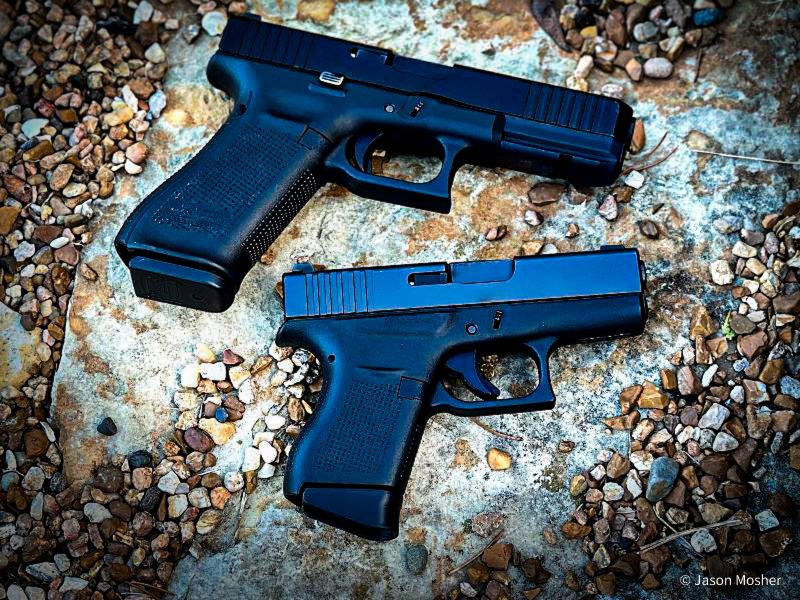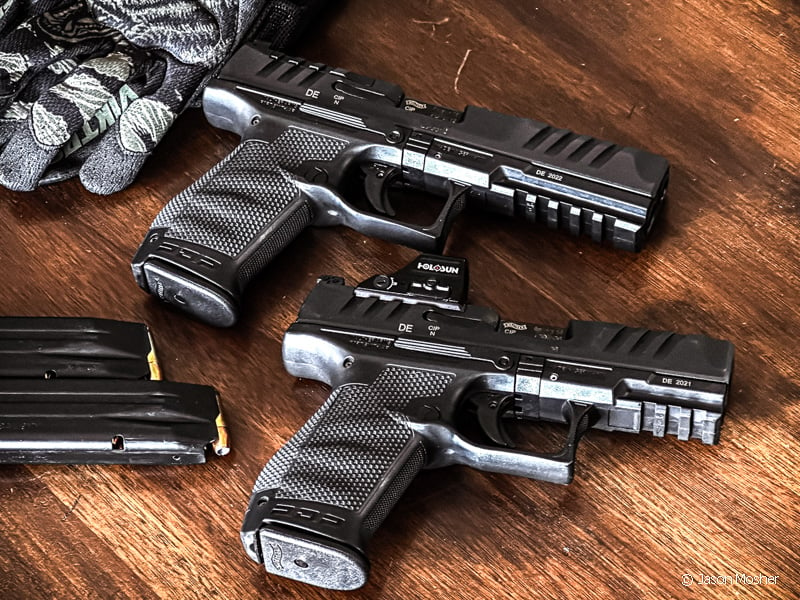Are there benefits to having two sizes of the same weapon? Yes, there are, and we will discuss a few of those benefits today. A “duty” weapon is a full-size service weapon for law enforcement or the military. But it has become a general term used for anyone who wants a primary full-sized weapon. You may want this for home defense, recreation, hunting, or the zombie apocalypse. Whatever the reason, many law-abiding citizens like to have a duty/combat belt, vest carrier, and other gear set up.

So, if you’re like me and wear both sizes throughout the year, you end up needing a large gun and a compact one. I also carry a duty weapon every day at work, so switching from full-size to compact has become a daily task for me. The difference in the type of guns you carry may not be significant. But there are a few advantages to carrying a compact gun that is identical to your duty weapon.
When does it matter?
If you like having multiple guns to go shoot on the range or even carry daily, there’s nothing wrong with that. It increases your knowledge of firearms and experience using them. But for some, spending a lot of time getting used to each different style of gun is not an option. For example, switching from a Glock to a 1911 pistol for everyday carry is a big switch. 1911 pistols need to be carried “locked and cocked” and this requires flipping the thumb safely off as you draw the weapon.

If you don’t have time to train with multiple handguns, switching from one size to another is easier when there are no major differences between them. A lot of gun companies offer compact versions of their full-size (duty) weapon which is a perfect combo for those not wanting or having time to train with different models or styles of guns.
Mommy Gun, Baby Gun
A mommy gun, baby gun doesn’t have to be the exact same color or even brand. If you want matching, that’s cool, but it’s more about them having the same function and ergonomics. For example, if you want to carry a full-size 1911, a compact 1911 from a different maker is just fine. A lot of modern handguns are modeled after Glock and function about the same. This makes it easy to have different makes and models of guns that function the same.
Crossing over to guns that do not function the same is where there can be issues if you don’t train with each specific gun. One may be hammer-fired, striker-fired, single, or double action. A difference like this can confuse your body when things go bad, and you need to react instead of think. Any version of these guns can be great for self-defense, but carrying a combination of them is more difficult. I will list a few of my favorite gun companies below that offer both duty and CCW-size weapons. If you don’t need a larger duty weapon but want a few different sizes for seasonal carry, there are still some options.
Glock

Sig P320 & P365
For those who prefer Sig handguns, the P320 and P365 are good duty/CCW combo. Sig’s P320 is what the M17 was based on, which is the US Military’s standard issue sidearm. You can also get a P320 compact which is closer to the Glock 19 size weapon and then of course the P365 is a compact weapon around the size of a Glock 43. Regardless of the model or size, you get the same Sig feel and function with this combo.
Walther PDP

1911 Pistol
I won’t focus as much on the brand of 1911’s because they are closer to being the same across the board than other models of handguns. Don’t get me wrong, there are good ones and bad ones, but a 1911 handgun has a specific design and shape. You can buy the same brand or pick from multiple brands. A 1911 is single action so it needs to be carried with the hammer in the cocked position and the safety on. The thumb safety is larger in 1911s because it is intended to be used when drawing a weapon.

Ruger LCP Max & Max 9
The smallest size of gun I carry is the Ruger LCP Max which is a small .380 pistol that is admittedly smaller than I prefer to carry. But sometimes it’s the only option I have based on the weather and what I’m wearing that day. If you need something this small but want the option to carry the same gun in a larger size, the Ruger Max 9 is still a compact pistol, but larger than the LCP Max. It’s chambered in 9mm and comes with a removable plate for an optic. For the price, these are great guns for concealed carry and worth checking out if you’re on a budget.
What’s best for you?
Again, there is nothing at all wrong with liking all types and brands of handguns. I have a wide variety myself. But keep in mind that each manufacturer’s guns will change just a little in each area. The trigger, style of sights, shape and angle of the handle, magazine release, felt recoil, and other factors all change. These changes make the gun feel different when shooting even though some of them look the same. If you like training a lot and don’t mind becoming familiar with each brand of firearm, then carry them all. Having the same or similar gun in different sizes is a good option if you don’t have as much time to train. Decide what’s best for you and go with it. Just remember to train for the worst and hope for the best.


